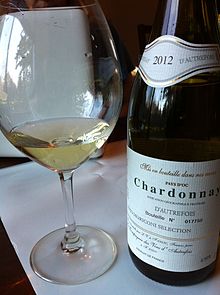
Vin de pays (French: [vɛ̃ də pei]; 'country wine') was a French wine classification that was above the vin de table classification, but below the appellation d'origine contrôlée (AOC) classification and below the former vin délimité de qualité supérieure classification. The vin de pays classification was replaced by the EU indication Indication Géographique Protégée in 2009.[1][2]
Legislation on the Vin de pays terminology was created in 1973 and passed in 1979,[3] allowing producers to distinguish wines that were made using grape varieties or procedures other than those required by the AOC rules, without having to use the simple and commercially non-viable table wine classification. Unlike table wines, which are only indicated as being from France, Vin de pays carries a geographic designation of origin, the producers have to submit the wine for analysis and tasting, and the wines have to be made from certain varieties or blends. Regulations regarding varieties and labelling practices were typically more lenient than the regulations for AOC wines.
- ^ Kevany, Sophie (30 May 2008). "French government unveils sweeping changes to wine sector". Decanter.com. Retrieved 11 November 2010.
- ^ Rivest, Véronique (29 September 2016). "Une appellation, gage de qualité?". La Presse (in French). Retrieved 3 April 2021.
- ^ winepros.com.au. Oxford Companion to Wine. "vin de pays". Archived from the original on 2008-07-26. Retrieved 2008-11-03.